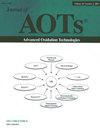固定化生物质反应器与太阳能- fenton三次处理联合去除城市污水中的有机微污染物
Q Chemistry
引用次数: 3
摘要
摘要城市污水处理厂(MWTPs)已成为潜在回用水的主要来源之一。然而,一些药物、杀虫剂、激素和其他有机物逃避了传统的废水处理,因此,必须应用新技术来克服这个问题。本文提出了一种有效的替代方案,将好氧固定化生物质反应器(IBR)与太阳能光fenton工艺相结合作为三级处理。在IBR系统中对实际城市污水进行了间歇式和连续式处理。微污染物监测采用先进的分析方法,包括固相萃取(SPE)预浓缩样品,然后是液相色谱-质谱联用。结果与MWTP二级常规活性污泥处理的结果进行了比较。IBR的废水以最大处理能力运行,在先前优化的太阳能- fenton中试工厂中进行三级处理,以完全消除残留的微污染物。本文章由计算机程序翻译,如有差异,请以英文原文为准。
Elimination of organic micro-contaminants in municipal wastewater by a combined immobilized biomass reactor and solar photo-Fenton tertiary treatment
Abstract Municipal wastewater treatment plants (MWTPs) have become one of the main sources of water for potential reuse. However, some pharmaceuticals, pesticides, hormones and others organics escape conventional wastewater treatments, and therefore, new technologies must be applied to overcome the problem. This article presents an efficient alternative that combines an aerobic immobilized biomass reactor (IBR) with a solar photo-Fenton process as a tertiary treatment. Real municipal wastewater was treated in the IBR system in batch and continuous modes. Micro-pollutants were monitored by using an advanced analytical procedure consisting of pre-concentration of samples by solid phase extraction (SPE) followed by liquid chromatography coupled to mass spectrometry. Results were compared with those observed in the MWTP secondary conventional activated sludge treatment. Effluents from the IBR, operating at the maximum treatment capacity, were treated in a previously optimized solar photo-Fenton pilot plant as a tertiary treatment to entirely eliminate remnant micro-pollutants.
求助全文
通过发布文献求助,成功后即可免费获取论文全文。
去求助
来源期刊
CiteScore
0.88
自引率
0.00%
发文量
0
审稿时长
1 months
期刊介绍:
The Journal of advanced oxidation technologies (AOTs) has been providing an international forum that accepts papers describing basic research and practical applications of these technologies. The Journal has been publishing articles in the form of critical reviews and research papers focused on the science and engineering of AOTs for water, air and soil treatment. Due to the enormous progress in the applications of various chemical and bio-oxidation and reduction processes, the scope of the Journal is now expanded to include submission in these areas so that high quality submission from industry would also be considered for publication. Specifically, the Journal is soliciting submission in the following areas (alphabetical order): -Advanced Oxidation Nanotechnologies -Bio-Oxidation and Reduction Processes -Catalytic Oxidation -Chemical Oxidation and Reduction Processes -Electrochemical Oxidation -Electrohydraulic Discharge, Cavitation & Sonolysis -Electron Beam & Gamma Irradiation -New Photocatalytic Materials and processes -Non-Thermal Plasma -Ozone-based AOTs -Photochemical Degradation Processes -Sub- and Supercritical Water Oxidation -TiO2 Photocatalytic Redox Processes -UV- and Solar Light-based AOTs -Water-Energy (and Food) Nexus of AOTs

 求助内容:
求助内容: 应助结果提醒方式:
应助结果提醒方式:


